 My daughter Norah and I went to New Haven yesterday for what will hopefully be our last trip to Yale-New Haven Children’s Hospital. Thank you to everyone who has inquired about her…she’s doing great and is back to her old tricks.
My daughter Norah and I went to New Haven yesterday for what will hopefully be our last trip to Yale-New Haven Children’s Hospital. Thank you to everyone who has inquired about her…she’s doing great and is back to her old tricks.
I saw this set of gates near the hospital and I immediately recognized that the *interesting* design element at the top was for the purpose of mounting the door closers (Norah: “Mom. Gates are NOT exciting.” Me: “What IS exciting?” Norah: “Candy and toys.”). LCN has several special templates for gate closers, and they don’t always look quite so obvious. Gates are tough though…the gate construction rarely offers enough space to attach the hardware, there are major security issues, and the hardware is usually exposed to the weather. Gates often need to meet egress requirements, and sometimes gates need to be operated by access control like a card reader or a remote release.
There are 3 pedestrian gates here, with one as the “active” gate. Two gates are for egress only, and are equipped with exit locks (no lever on the outside). The other gate has a lockset, and also an electromagnetic gate lock like the Schlage Electronics 390G. All of the gates have LCN closers. Everything seems to be operating well, although the closers are showing some signs of the constant exposure. I would typically specify special rust inhibitor (SRI) for closers exposed to the weather, which provides some extra protection from corrosion. The electromagnetic lock presents an interesting code application, because the gate would normally require a motion sensor and emergency push button to release the lock from the egress side, but someone could potentially actuate the release devices from the secure side.
Someone asked me yesterday about what I recommend for panic hardware that is exposed to the weather. I usually use Von Duprin 55 or 88 series crossbar devices with a bead of sealant between the panic hardware and the door. If I have to use touchpad style panic hardware I use the Von Duprin 33 or 99 series with weep holes drilled in the mechanism tube, and the internal components have to be kept extremely well lubricated. Panic hardware can add to the security problems depending on the design of the gate, so the bottom line is that it’s difficult to specify gate hardware that is secure and also meets egress requirements.
If you have any advice about gates, I’d love to hear it!
Here are some photos of the New Haven gates:
And here’s another gate that I saw recently:
You need to login or register to bookmark/favorite this content.

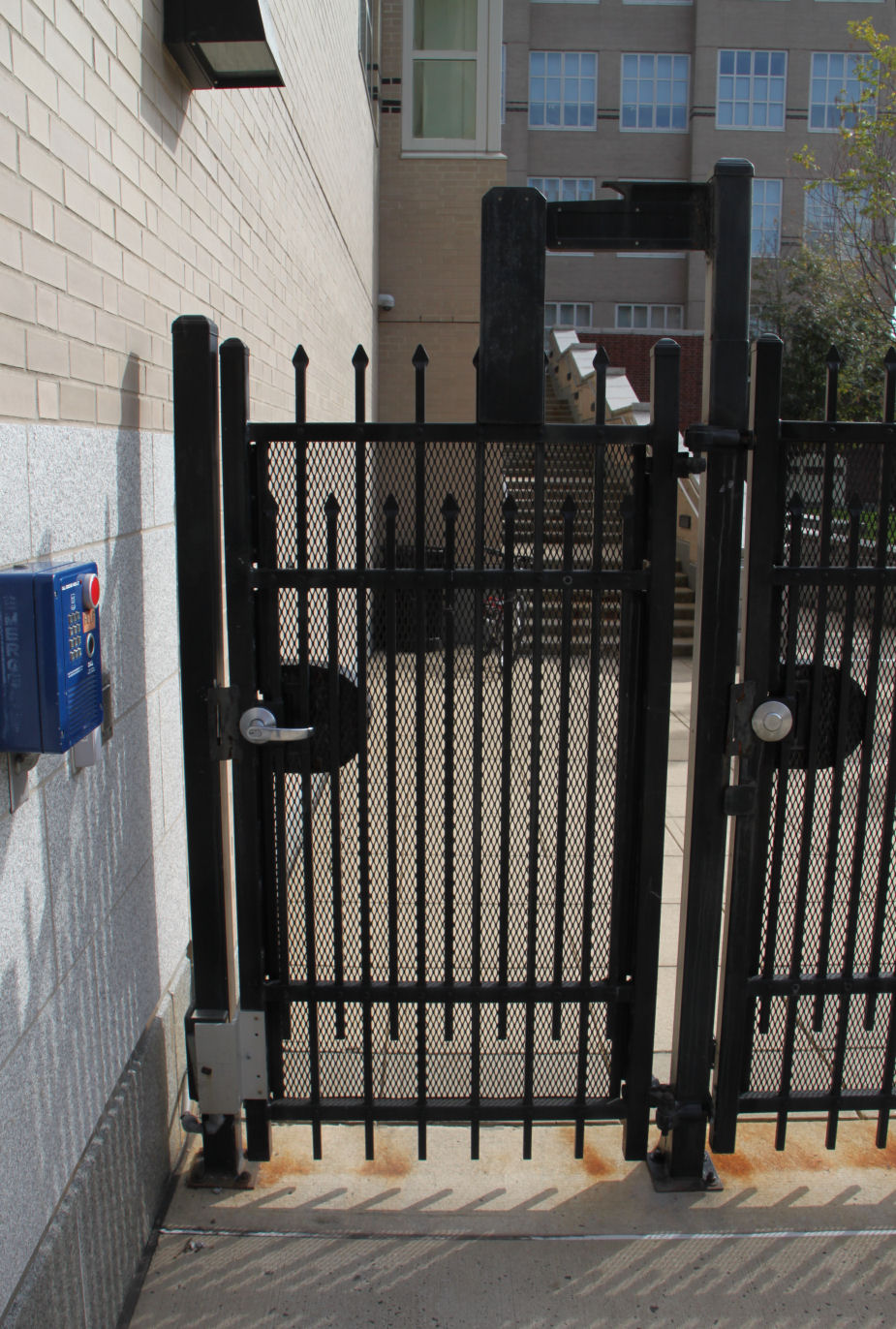
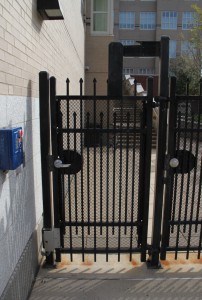
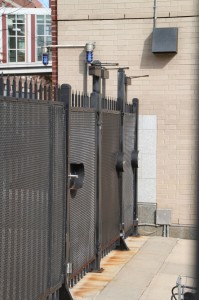
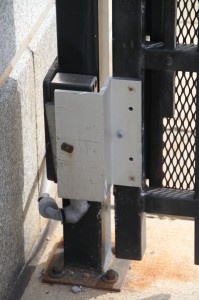
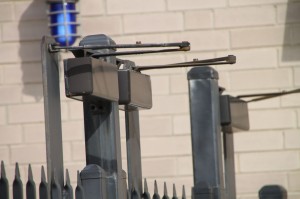
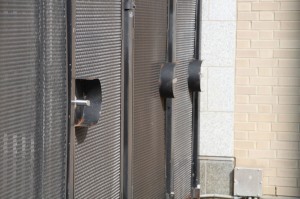
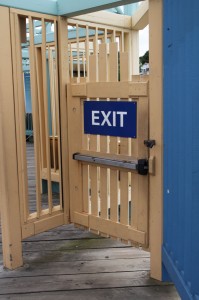
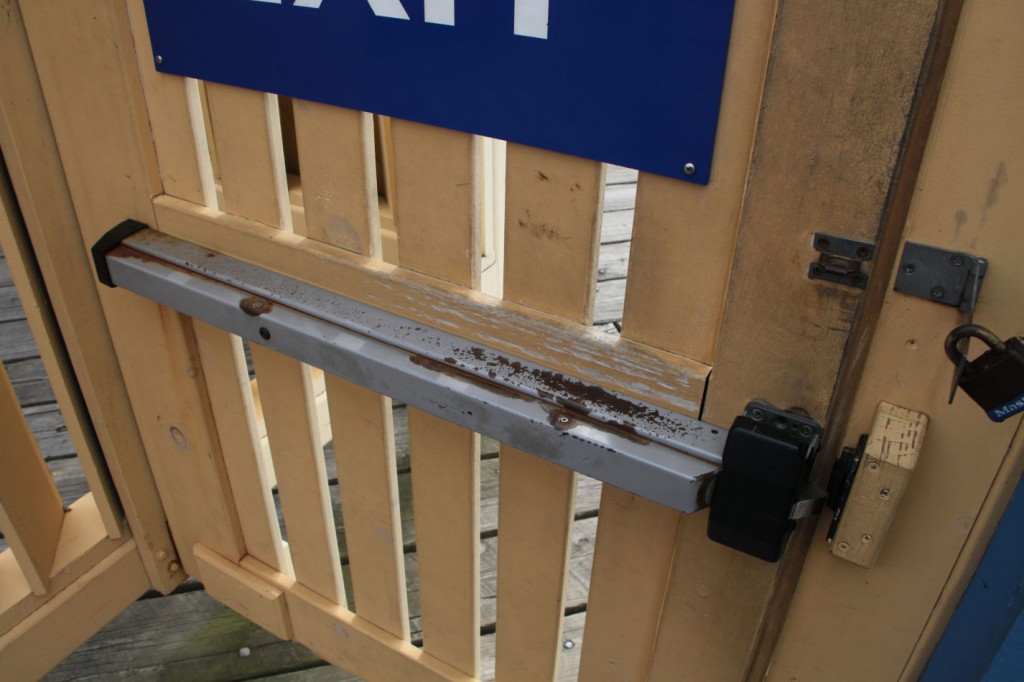





Hey Lori, yes I know you posted a closer related post and I didn’t comment (until now)
upon “closer” inspection, the door closers used on the gates appear to be the 4010 bolt hole pattern (as seen on pull side of the brackets)
I agree that the SRI rust inhibitor would help prevent rusting of closer body and the arms, unless maintenance don’t mind greasing these arms frequently.
seems closer installer had a great idea with converting corner brackets into gate closer body mounts, (I recognize the top part of the plates, which is for mounting in corner of a doorway)
kidzilla: lucky mommy don’t make you stand next to any hardware she’s photographing, I remember a post that was from a woman that worked at LCN (post title was “another day, another zoo”) she had her child stand next to 2 closers on a gate at a zoo.
Hi Jess –
I was wondering where you were. 🙂
Thanks for chiming in.
– Lori
Hmmm… Gates are always a challenge. I assume the keyed lever is classroom function. Don’t like this particular magnet application though. How many busted-up shins do you think there have been when people are entering through that gate? Probably only happens once per person as that kind of pain you’d remember and avoid! It is a hospital, so they could get immediate treatment…
Yes, that would hurt! I’m guessing the location had to do with access to the wiring.
Yes you are right automatic gate closer is very helpful. They does not need to close them manually.
if they’re going to go to that much trouble, why not just put a horizontal
overhead bar (header) at 7′ to 8′ level across all three gates, put the pickets at the top of that, then install all three closers in a parallel configuration (with standard door mounting geometry)then they can close and latch without fail ! granted, there could be some ‘architectural aesthetic’ issues, but who wants an nose in the air architect anyhow ! LOL! this is what i did for condo/hoa pool gates for years and not a single one has yet to fail, that i’m aware of.
I agree, but most of the gates I see have no header to attach anything to. If we catch it early we can sometimes get the architect to change the design, but sometimes it’s too late.
just talk the owner/manager into the overhead crossbar afterward… there is no better match – than emulating a parallel arm mounting on what would otherwise be a standard door. virtually fool proof, and no doubt about “positive” latching too. !
Yup, this looks like a retrofit, or something got changed during the construction (or post-construction). Why not make the gates taller and use a header and top rail on the gates as was mentioned? This is not an architectural solution! No self-respecting professional would put their name on this.
Gates always seem to be an afterthought!
– Lori
Locinox Mammoth 180 or a Verticlose2 are ADA compliant gate closers that also would work great and you do not need a transom/header!
Wow I can’t believe I found my people. I’m getting ready to design and install a gate with this devise. I’m searching through the internet for all info. Are you guys still in the business?